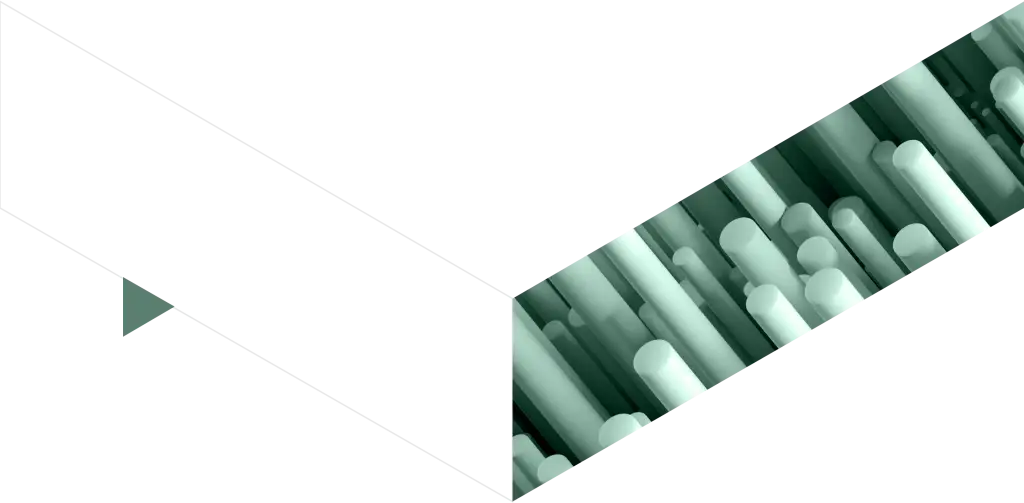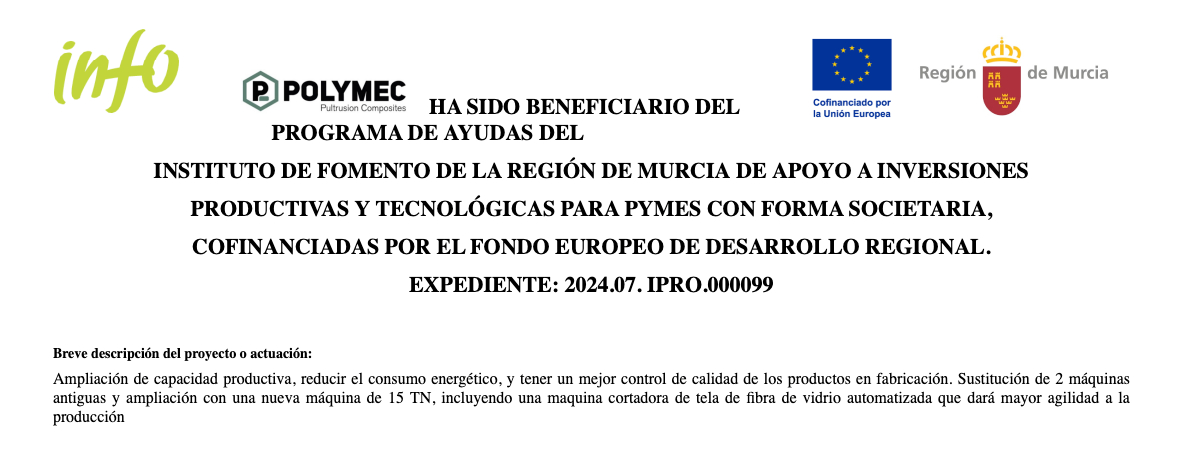Polymec, S.L. began its activity in 1981. Manufacturer of polyester profiles reinforced with fiberglass and carbon using the pultrusion process. Our more than 40 years in the market guarantee our products, both in quality and service. We work only with the best materials on the market, which ensures the excellent properties of our fiberglass- or carbon-reinforced profiles, as well as our corrugated fiberglass rods.


Pultrusion is an industrial manufacturing technique increasingly used in sectors that demand strong, durable, and lightweight materials. In essence, it’s a continuous process that creates reinforced profiles — most often using fiberglass — by pulling fibers through a heated mold.
But what exactly is pultrusion? Imagine a system where fibers such as glass or carbon are impregnated with resin and continuously drawn through a mold that shapes and solidifies them. This is how pultruded profiles are made — valued for their stability, strength, and adaptability.
The pultrusion process is simpler than it seems, yet highly technical. It begins with continuous fibers fed from spools. These fibers pass through a liquid resin bath, usually polyester or epoxy, which coats them completely.
Once impregnated, the fibers enter a heated mold that defines the final profile shape. The resin hardens with the heat, and the finished product is continuously pulled out and cut to the required length. Controlling temperature, speed, and pulling force is key to maintaining precise tolerances and consistent quality.
This process allows for the production of everything from thin rods to complex structural profiles — all with exceptional mechanical strength.
Compared to traditional materials such as steel, aluminum, or even wood, pultruded profiles offer clear advantages:
Much lighter while maintaining stiffness and strength.
Corrosion- and rust-resistant, ideal for harsh environments.
Non-conductive, making them safe for electrical applications.
Low maintenance and long-lasting.
Dimensionally stable, even under extreme weather conditions.
Thanks to these properties, pultruded profiles are widely used in outdoor structures exposed to sunlight, humidity, or chemicals — environments where other materials would fail.
When we talk about pultrusion, fiberglass is the most common reinforcement choice. Why? Because it offers the ideal balance between performance and cost. It’s strong, affordable, non-conductive, and suitable for a wide range of applications.
In sectors such as construction, agriculture, chemical industry, and marine engineering, fiberglass profiles have become a standard solution. Common uses include:
Railings and outdoor structures
Industrial grating (tramex)
Technical ladders
Machinery components
Agricultural stakes
Manufacturers like Polymec, based in Spain, operate under strict European standards such as UNE-EN 13706, ensuring structural quality in every profile produced.
One of pultrusion’s great strengths is its versatility. Standard shapes can be produced, but custom designs are also possible for specific applications. The most common include:
Rods (smooth, ribbed, round, or square)
Tubes (round, square, rectangular, telescopic)
Flat bars (plain or special geometry)
Angles, U-profiles, I-beams, dog bones, corner pieces
Gratings (tramex)
Special profiles: steps, manhole covers, skirting boards, tool components
In Polymec’s catalog, there are versions made with fiberglass, carbon fiber, or even graphene additives, offering enhanced properties such as thermal conductivity or chemical resistance.
Producing pultruded profiles is not just a technical process — it must also comply with international standards to ensure safety and performance.
In Europe, the key reference is EN 13706, which classifies profiles into two categories: E17 (standard) and E23 (high quality). Polymec manufactures under the latter, meeting stricter requirements for stiffness, strength, and dimensional tolerances.
These profiles are also tested under EN ISO 527 and EN ISO 14125 standards to evaluate their behavior under tension, bending, shear, and other mechanical loads.
The potential of pultruded profiles extends far beyond current uses. Their future is bright — especially in industries seeking sustainable, durable, and long-lasting materials. Emerging applications include:
Supports for solar panels and wind turbines
Railway and marine infrastructure
Components for smart urban furniture
Modular construction systems
Lightweight parts for automotive and electric transport
Thanks to specialized companies like Polymec, which not only manufacture but also advise and customize solutions, pultrusion is positioning itself as a key technology in the shift toward a more efficient and sustainable industrial future.
Polymec has been present as a founding member of this cluster of companies, which aims to bring together all businesses in the composites sector in order to identify opportunities for innovation and business development through collaboration with other companies in the field, as well as to gain timely access to relevant information on issues affecting companies involved in composite manufacturing.
Our Manager, Mr. Santos Sánchez, was elected Vice President of the AESICOM cluster at its latest assembly.